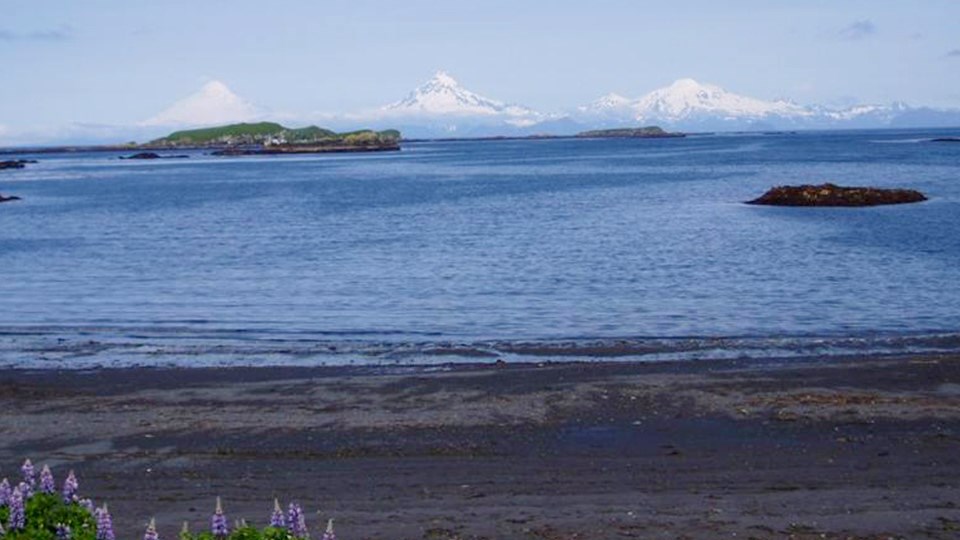April 26, 2021
by Julie Avery

Sanak Island. Photo by Nicole Misarti.
Do you like fish? Have you heard warnings from the FDA about consuming predatory fish such as tuna, swordfish, and shark due to high mercury? Fish are a healthy food and an excellent source of lean protein, healthy omega-3 fats, vitamin D, iron, selenium, zinc, and iodine. Fish provide all these nutrients, which are essential for human and animal health. Marine mammals in Alaska, like Steller sea lions and northern fur seals, thrive on a diverse fish diet. But what about the mercury? Since we eat some of the same fish as seals and sea lions, we can study them to understand how mercury might affect humans.
Coastal and Arctic communities are especially vulnerable to the effects of mercury contamination due to their dependence on fish and marine resources for food and sociocultural needs. According to the World Health Organization, mercury is one of the top 10 contaminants of concern for human health.
There are two primary sources of mercury in the Arctic: (1) natural inputs from volcanoes, melting permafrost, and river systems, and (2) human sources from distant industrial activities in human population centers that are transported through the atmosphere and deposited in the Arctic.
Mercury can take on many forms such as elemental mercury, inorganic compounds, or organic compounds. Mercury deposited in the environment is chemically modified by bacteria to its biologically active form, methylmercury (organic compound). This form of mercury can then be easily incorporated into the marine food web affecting invertebrates, fish, and mammals, including humans. Chronic exposure to even low quantities of methylmercury can have long-lasting effects on humans and animals, including reduced health, impaired reproduction, and lower survival rates. Mercury is greater in older individuals because it accumulates over an individual’s lifetime (bioaccumulation). Mercury is also greater in predators like sharks and tuna because they eat other animals (biomagnification). In human terms, this means a vegetarian would be less likely to have high levels of mercury than someone who eats a lot of fish and meat; and a child would probably have lower concentrations of mercury than an adult or a senior citizen eating the same diet.
Our team is interested in how mercury changed in the Arctic before the Industrial Revolution added higher volumes of mercury to our environment. Our work focuses on the Aleutian Island region, which is a volcanic archipelago spanning from Alaska to Russia, separating the Bering Sea from the North Pacific Ocean. Volcanic activity in the eastern Aleutian Islands is well studied, so we started our research on Sanak Island, in the eastern Aleutians.
At first, our small number of samples seemed to show a gradual increase in mercury over time; but we analyzed more samples from different archaeological time periods and we identified high concentrations of mercury in bone from sea lions that lived more than 3000 years ago. According to our colleagues at the United States Geological Survey (USGS) 3000 to 4000 years ago was a very active volcanic period for the eastern Aleutian Islands. This means, volcanic eruptions may have contributed to increased mercury concentrations in predators living in the area.
These preliminary data are the first step in our understanding of the natural processes that contribute to biologically active mercury in the Aleutian environment. Our next step is to use stable isotope analyses to determine the trophic level that each animal was feeding at (are they eating zooplankton? predatory fish?) and what formed the baseline of the food web in the Aleutian Islands.
In addition to investigating what our mammals may have been eating, we will also evaluate mercury dynamics based on changes in climate (warm vs. cool years), volcanic eruptions, and other non-biological factors. Finally, we will expand this work to the Central and Western Aleutian Islands to examine regional variability in mercury trends.
Do not hesitate to contact us if you have any questions about the project.